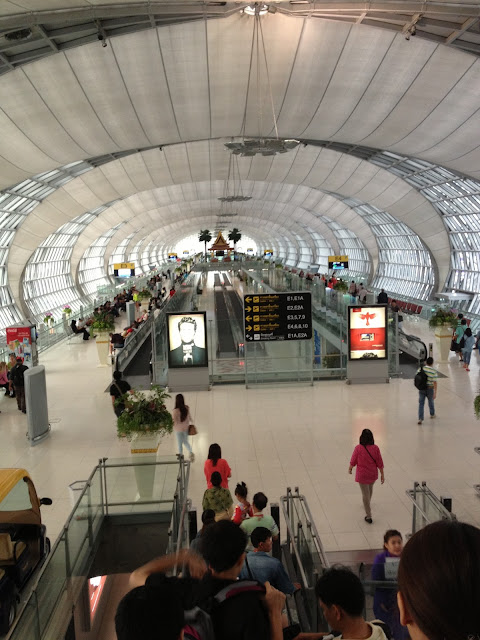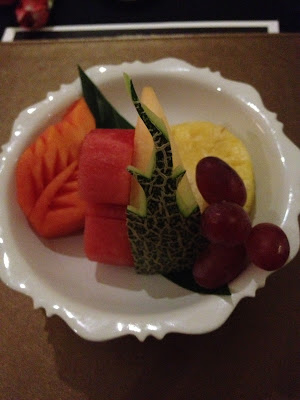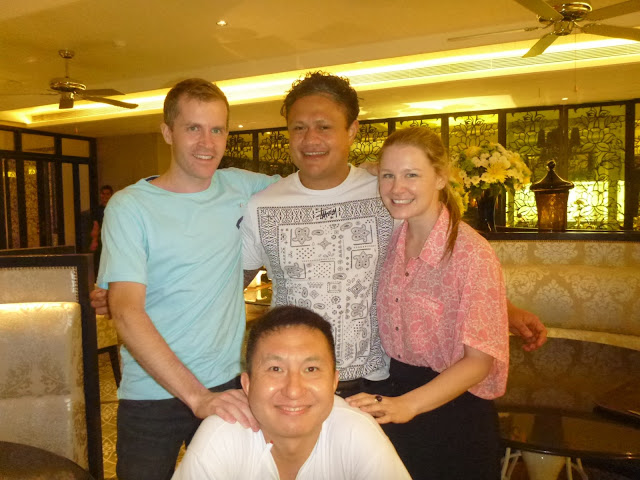I'm sitting in my home in Sydney, where the weather is 16.9 degrees, a drop of 15 degrees from what it is currently in Bangkok. It's been almost 2 weeks since I arrived home, and the trip now feels like a dream. I flick through my photos and think about what I experienced... and it all seems like a million worlds away. The most trippy part for me is wrapping my head around the fact that I finally made it overseas for the first time!
When I think back to arriving in Bangkok and venturing out for the first time I can't help but laugh. I had these horrible ideas in my head of being followed or pick-pocketed, yet I felt so safe and accepted. I remember worrying about what I'd be eating and feared getting sick, yet I ate fresh fruit, drank iced drinks and brushed my teeth with tap water! But most importantly, I kept my mind open to what lay ahead of me and what I would be experiencing as part of the Experiential Nursing Program. I knew before the trip that barriers in verbal and non-verbal communication would exist, and these barriers required me to be flexible and adaptable when interacting with people. Learning a few words in Thai definitely helped and it is evident that a smile can mean a lot. Also, being immersed in an unfamiliar culture compelled me to be aware of my own beliefs and customs and I remained open-minded to new and differing scenarios, always conducting myself in a culturally safe and appropriate manner.
I struggle to think of anything that would have enriched my life or influenced my personal or professional development to the extent that this trip has. I can say that without a doubt, I returned home with a greater appreciation of the health care available in Australia and a greater understanding of socioeconomic issues and their impact on health in developing countries. Where do I begin describing what I witnessed? Diseased and injured organs and limbs. Forensic photographs of horrific accidents. Babies born with lethal abnormalities. Women swaying around poles atop bars, expressionless. The sad result of sex tourism and children left in orphanages. Rubbish dumped in streets. A homeless man and his dog sleeping underneath the train station. Unprotected motorcycle and scooter riders transported 2, 3 or 4 passengers. Polluted waterways filled with rubbish and dead fish. Exquisite temples standing between rundown apartments and tall commercial towers. Markets selling medications that would require a prescription if sold in Australia. Women begging for money with children asleep in their laps. Private hospitals filled with international clients. People living with HIV socially isolated and forgotten about.
All of this just emphasises the fact that health care should be a right, not just something that exists to those who can afford it. The focus of health in Thailand needs to change from elective and cosmetic, to prevention of illness and promotion of health; through increasing education, eliminating stigma, and reducing social inequalities. Our visits during the program also highlighted the need for better equipped rural and remote facilities and recognition of their importance in the health care system for reaching disadvantaged populations.
Overall, this experience confirms my choice of career: Nursing, the art of care and healing that translates universally regardless of language, country, and culture. I know that I am destined to do more than work on a general ward; I want to be working to help the disadvantaged, I want to work in rural Australia, I want to travel overseas and see where nursing can take me, and I want to contribute to changing the culture of nursing in Australia.
Things I'll miss about Thailand:
- Living in a completely unfamiliar environment and culture
- Walking through the city and exchanging smiles with strangers
- Meaningfully relating to people non-verbally
- Venturing out in to the city not knowing what to expect
- Seeing squirrels scurry along power lines
- Playing with gorgeous and happy children
- Sleeping less than 6 hours a night and dreaming about the buffet breakfast I'll wake up to
- The buffet breakfast
- The street vendors and fresh produce
- Being able to afford to eat prawns in every meal
- Conversing in a new language (Sawaadee-ka!)
I will even miss:
- Waking up so early to allow copious amounts of time for traffic
- Eating too much food because it is too delicious not to consume
- The heat and the interesting smells
- Sitting on a bus for hours being able to absorb the views of changing landscapes
- Blowing my nose every 30 seconds while eating the spiciest meals
What I'll remember for the rest of my life:
- Being so welcomed into an entirely different environment and culture
- Discovering an absolute love and passion for travel
- Participating in a rich learning experience and further discovering my interest in health care
- Pushing myself beyond my comfort zone and surviving
- Immersing myself in the experience and making the most of every moment!
But for now, reality beckons. A few days ago I received my subject results for last semester; 3 Distinctions and a High Distinction - absolutely stoked! On Monday, I'm back at university for the last 6 months of my degree! It's all starting to feel a little more real, especially with my New Graduate Interview date fast approaching. I also have an upcoming placement in Orange (Western NSW) which will give me a perspective of rural nursing and I cannot wait!





















































